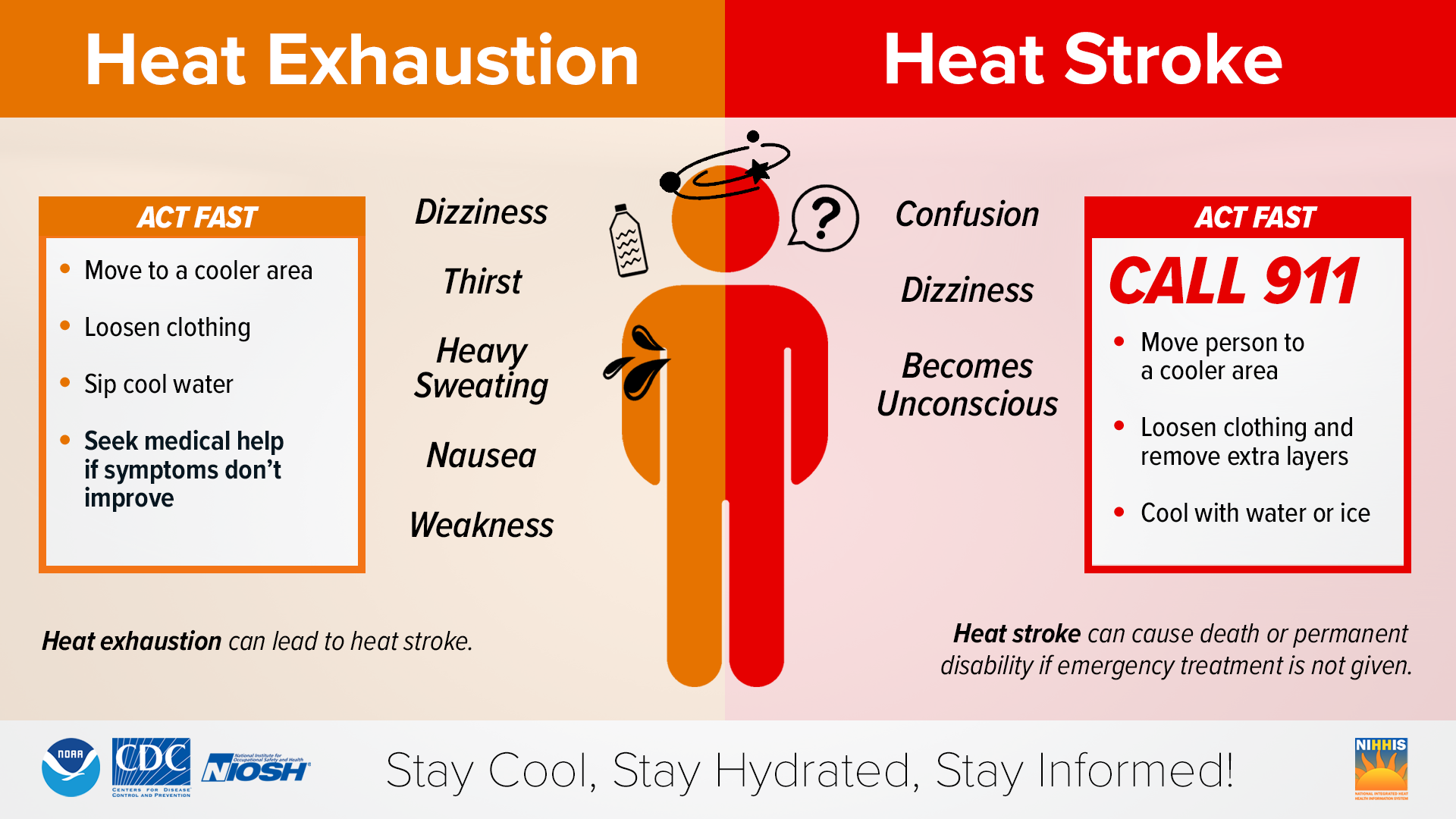Heat Exhaustion or Heat Stroke? Know the Signs of Heat Illness
Posted
Last Updated
By noaa.gov.
If you are spending any time outside this summer, chances are you’ll be exposed to a lot of sun, high temperatures and humidity.
How much heat can a person safely endure? It depends.
Much less visible and dramatic than hurricanes, floods and tornadoes, heat is considered the silent killer, affecting the lives and health of people across the country. An average of 702 heat-related deaths occur each year in the United States, according to statistics from the Centers for Disease Control and Prevention (CDC).
Certain groups of people should be especially careful during hot weather conditions. For example, city-dwellers and those living in the upper floors of tall buildings or in heat-prone regions are most at-risk for heat-related illness. People who have difficulty getting around or who have health conditions are particularly susceptible. The elderly and the very young also merit special attention during periods of high heat and humidity.
NOAA’s National Weather Service (NWS) and the Occupational Safety and Health Administration (OSHA) have also partnered to increase awareness for outdoor workers and their employers during excessive heat events. As part of this effort, NWS incorporates specific outdoor worker safety precautions when heat advisories and warnings are issued.

No matter what your job is or how you spend your free time, prevention of heat-related illness is key.
Here’s what you can do:
1. Be informed and stay alert
Pay close attention to heat advisories or warnings that have been issued for your community.
- NWS continually updates heat-related advisories and warnings online at weather.gov. (Click on “Excessive Heat Warning” and “Heat Advisory” under the U.S. map — if there are no current warnings or advisories in the United States, nothing will appear).
- NOAA issues excessive heat warnings when weather conditions pose an imminent threat to life and heat advisories when weather conditions are expected to cause significant discomfort or inconvenience or — if caution is not taken — become life threatening.
read more at noaa.gov.
